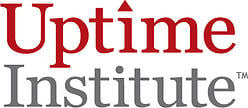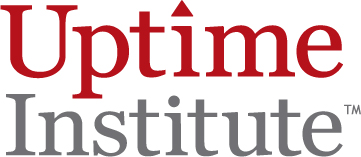In a news article earlier this week, I alluded to my presence at the Uptime Institute’s Uptime Network event. I also reported that Uptime Institute Founder Ken Brill had undergone surgery to remove a Glioblastoma brain tumor. Ken’s prognosis is bleak, and he was forced to miss the Uptime Network, while promising to be back next year. It was just a few short months ago that I saw Ken wearing a giant orange foam hat as a way of celebrating Uptime’s Server Roundup.
 As a guest at the Uptime Network, I got to take a look behind the curtain that has always shrouded it from view. The 120 or so network members in attendance celebrated each other’s successes and analyzed each other’s work. My participation was limited by agreement, so I mostly saw the celebrations. My hosts invited me to most of the sessions, and QTS invited me to tour their 970,000 square foot Metro data center. Roland Ignacio, director, Critical Systems at QTS, told me as much as I could possible need to know about that facility during the tour and on the bus ride. He also described the company’s corporate culture and its quality control procedures. I was excluded from the evaluation session so that my press badge would not inhibit free and open exchange, but I’m not sure how much more I could learn given that depth of my exchange with Roland and also with Kevin O’Neill, the director of Marketing Programs at QTS. I’ll be collaborating with them to bring you information about this huge and very impressive facility. In short, at least some of the network members seemed happy that I was there learning about the importance of their work.
As a guest at the Uptime Network, I got to take a look behind the curtain that has always shrouded it from view. The 120 or so network members in attendance celebrated each other’s successes and analyzed each other’s work. My participation was limited by agreement, so I mostly saw the celebrations. My hosts invited me to most of the sessions, and QTS invited me to tour their 970,000 square foot Metro data center. Roland Ignacio, director, Critical Systems at QTS, told me as much as I could possible need to know about that facility during the tour and on the bus ride. He also described the company’s corporate culture and its quality control procedures. I was excluded from the evaluation session so that my press badge would not inhibit free and open exchange, but I’m not sure how much more I could learn given that depth of my exchange with Roland and also with Kevin O’Neill, the director of Marketing Programs at QTS. I’ll be collaborating with them to bring you information about this huge and very impressive facility. In short, at least some of the network members seemed happy that I was there learning about the importance of their work.
So, change is coming even to the very secretive Uptime Network, and as the network itself is a business, the change must be managed very carefully. At its heart, the Uptime Network is a social network. It simply would not work with member activity in the form of reporting information that Uptime captures in its databases, analyzes, and reports back to the network in the forms of trends, advice, and predictions. Sure the membership fees are important, as they help pay the salaries of the staff experts who work with the data, but trust is the lubricant that keeps the network functioning. Without mutual trust, network members would have no reason to share corporate data for analysis by Uptime.
Of course, too much secrecy can breed suspicion as well. More data makes for more valid analysis, of course, but how can a secretive organization attract the additional members it needs to generate additional data? I plan to explore this issue next week with Uptime’s Chris Hill and Anton Hios.
During the opening session, Uptime Institute Chairman and CEO Martin McCarthy declared his goals for the Uptime Network. Things that would change, he said, included:
-
Increased financial backing and scale
-
Greater resources and investment
-
More staff and greater value
-
Housing, access, and member analysis of proprietary data
-
Global expansion of network
-
Accelerate IT and C-level engagement
-
Ken Brill Thought Leadership
Uptime, I am sure, will change cautiously and slowly, but should they succeed the spotlight will shine all the more brightly on the organization and its research results. They may remain proprietary, but it’s hard to remain secretive while standing in the spotlight.
Uptime invited me to this meeting knowing I would be writing about any interesting research results I saw because of my frequent calls for industry-wide information sharing and transparency, and I saw plenty, so look for that coverage in future blogs.
Given the renewed public and government interest in data centers, some of which was sparked by two now infamous articles in the New York Times, the data center industry will require authoritative organizations to represent it. The Uptime Institute and 451 Research could fill the vacuum.



